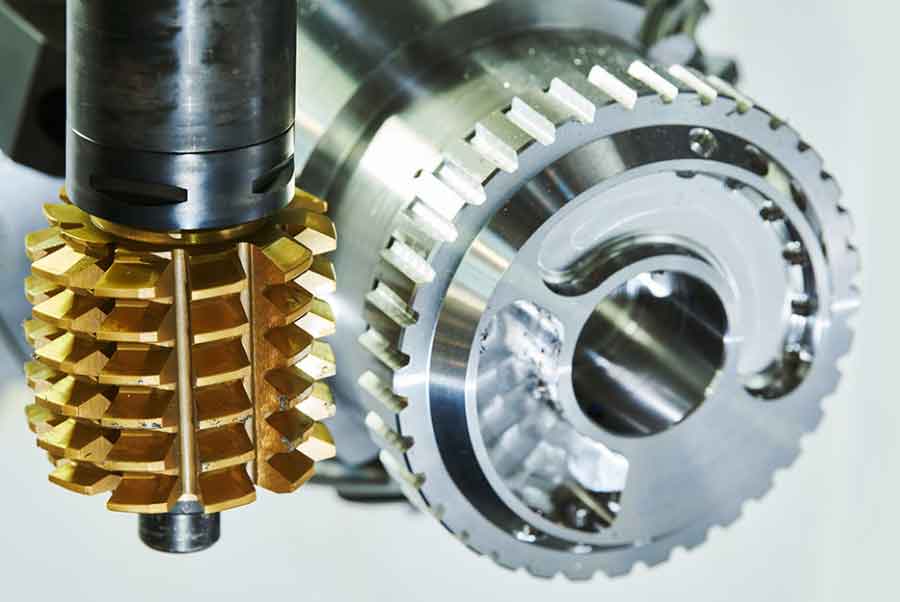Gear hobbing, a well-established gear manufacturing process, has seen several innovations in recent years that have pushed the boundaries of gear manufacturing capabilities. Here are some notable innovations in gear hobbing:

- High-Speed Gear Hobbing: Traditional gear hobbing processes operate at relatively low cutting speeds. However, advancements in machine design, tool materials, and coatings have enabled high-speed gear hobbing. High-speed hobbing allows for faster cutting speeds, resulting in increased productivity and reduced cycle times.
- Dry Hobbing: Traditionally, gear hobbing has involved the use of cutting fluids or lubricants for chip evacuation and cooling. However, dry hobbing has gained popularity as an environmentally friendly and cost-effective alternative. Advanced machine designs, coatings, and tool materials now enable dry hobbing by optimizing chip flow and reducing friction and heat generation.
- Multi-Axis Gear Hobbing: Multi-axis gear hobbing machines have been developed to increase flexibility and expand the range of gear geometries that can be produced. These machines incorporate additional axes of motion, allowing for more complex gear profiles, helical gears, and internal gears to be hobbed in a single setup. Multi-axis gear hobbing machines offer greater design freedom and efficiency in gear production.
- In-Process Measurement and Control: To ensure the accuracy and quality of gears during hobbing, in-process measurement and control systems have been integrated into gear hobbing machines. These systems use probes, sensors, or optical measurement techniques to measure critical parameters such as tooth profile, tooth spacing, and gear runout during the hobbing process. Real-time feedback and control enable immediate adjustments to optimize gear quality.
- Advanced Tooling and Coatings: Continuous advancements in tooling materials and coatings have significantly improved the performance and durability of hobbing tools. The development of high-speed steel (HSS), carbide, and cubic boron nitride (CBN) hob materials, along with advanced coatings, has increased cutting speeds, tool life, and surface finish quality. These advancements have contributed to more efficient and precise gear hobbing processes.
- Simulation and Digital Twin Technology: Gear hobbing process simulation software and digital twin technology have become valuable tools for optimizing gear hobbing operations. These tools enable virtual testing and optimization of gear designs, cutting parameters, and machine settings, reducing the need for physical prototypes and minimizing trial-and-error in the production process.
- Automation and Robotics: Automation and robotics have been integrated into gear hobbing processes to enhance productivity and reduce manual intervention. Automated loading and unloading systems, robotic tool changers, and robotic workpiece manipulation enable continuous production, reduce setup time, and improve overall process efficiency.
- Green Gear Hobbing: With increasing focus on sustainability, gear hobbing processes have been optimized for energy efficiency and reduced environmental impact. Energy-efficient machine designs, eco-friendly cutting fluids or lubrication alternatives, and waste reduction measures contribute to greener and more sustainable gear manufacturing.
These innovations in gear hobbing have revolutionized the capabilities and performance of the process, enabling manufacturers to produce gears with higher precision, increased productivity, and improved cost-effectiveness. Embracing these innovations can lead to significant advancements in gear manufacturing and drive further progress in various industries that rely on gears for their mechanical systems.
